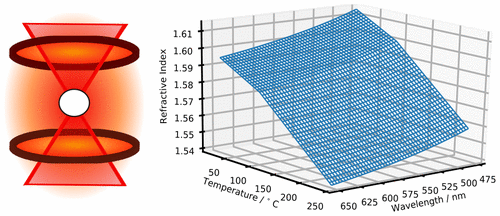 In a collaboration between Royal Holloway University of London (RHUL) and the Central Laser Facility (CLF), Megan McGrory (PhD student at CLF), Professor Martin King (RHUL) and Dr Andy Ward (Octopus Imaging Cluster, CLF) recently developed a system to study the behaviour of heated, levitated, solid particles. The paper, published in the Journal of Physical Chemistry A, could potentially broaden the horizons for research into wider fields such as analysing aerosols connected with pollution.
In a collaboration between Royal Holloway University of London (RHUL) and the Central Laser Facility (CLF), Megan McGrory (PhD student at CLF), Professor Martin King (RHUL) and Dr Andy Ward (Octopus Imaging Cluster, CLF) recently developed a system to study the behaviour of heated, levitated, solid particles. The paper, published in the Journal of Physical Chemistry A, could potentially broaden the horizons for research into wider fields such as analysing aerosols connected with pollution.
The team studied the behaviour of a solid particle that was levitated in air, inside a heating element, by using laser beams. They raised the temperature to 250 degrees Celsius using a custom cell with a heating element built by Brian Landowski (who is now in STFC Technology). Once trapped in the laser beams the particle could be studied until it melted.
Andy Ward said about the experiment:
“It's a test system where we have studied particles normally used for calibrating aerosol instruments. But now it's developed, we can explore how aerosols behave in cooking, combustion and even catalyst chemistry."
Read the paper here.
Image credit: Reprinted with permission from "Using Mie Scattering to Determine the Wavelength-Dependent Refractive Index of Polystyrene Beads with Changing Temperature" Megan R. McGrory, Martin D. King, and Andrew D. Ward. The Journal of Physical. Chemistry A Article ASAP. DOI: 10.1021/acs.jpca.0c06121. Copyright 2020 American Chemical Society.

